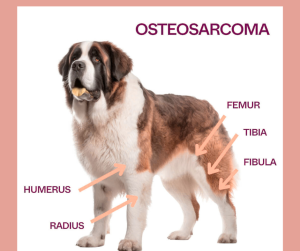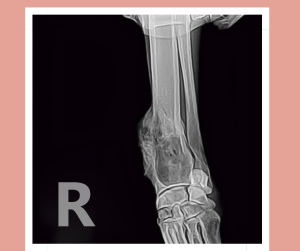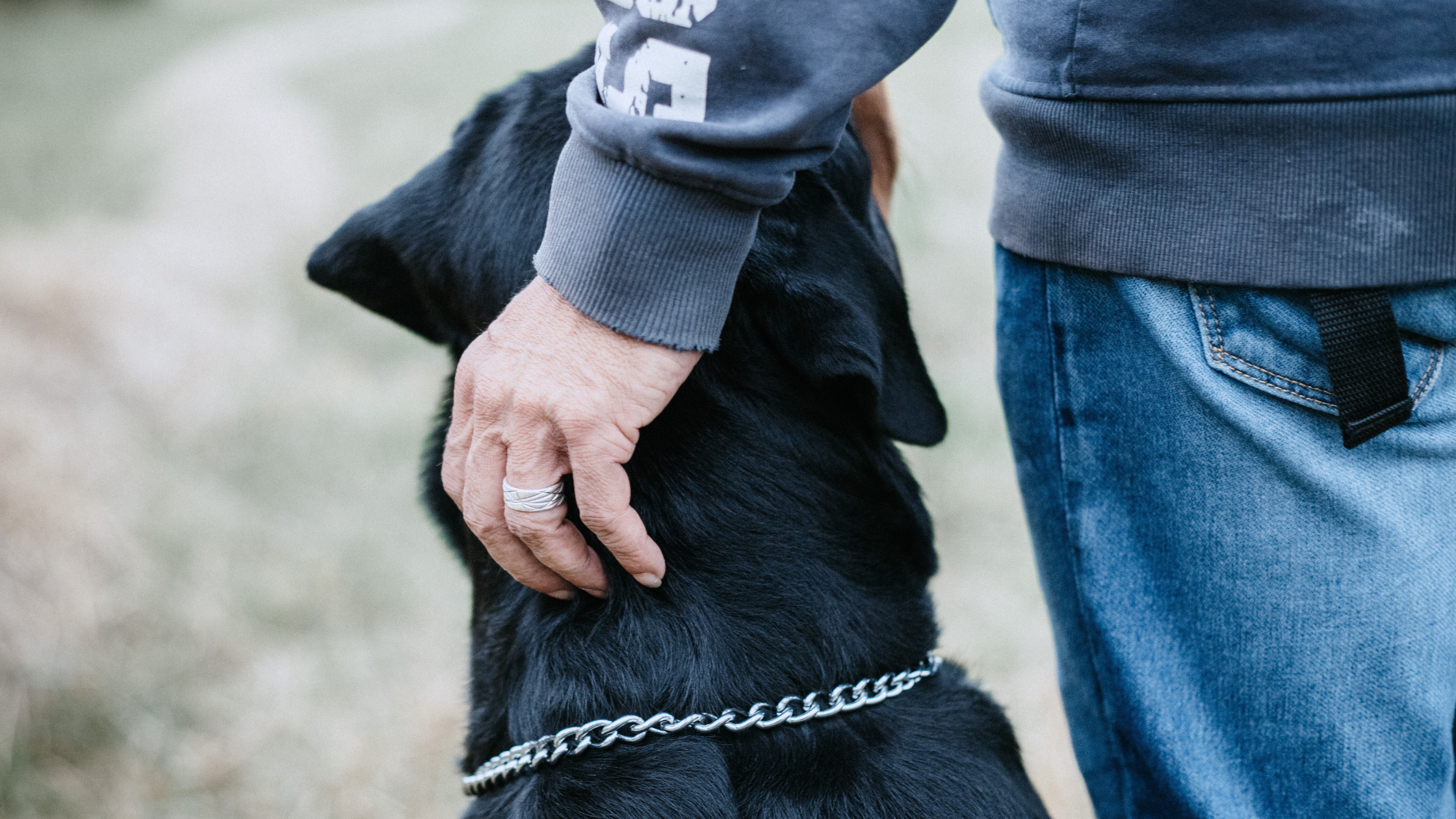Osteosarcoma is a tumour of the bone, and it is the most common bone tumour (85%) found in dogs. It is more common in large and giant breeds, such as Rottweilers, Greyhounds and Great Danes. In our practice, we most often see it in Rottweilers. The size of the dog is more important than the breed. The risk of OSA is 60 times higher in dogs weighing over >30kg that have a great height.
How does it present itself?
Sometimes a firm swelling can be seen on the leg where the bone tumour is, and the dog will often be limping on this leg. Osteosarcoma is a painful tumour, but even though it causes pain, the dog may not cry out with it. Instead, they could have more subtle changes in behaviour, such as trembling or being more quiet than usual. Bone tumours can also weaken the bone and make it more likely to fracture. A fracture generally presents as acute, severe swelling; however, in OSA cases, only 3% develop into a pathological fracture.

Diagnosis
Dogs with osteosarcoma do not normally respond very well to standard pain relief, and if they do it is usually a transient effect (short-lived). Osteosarcomas can also be seen on other parts of the body, such as the head, spine or ribs.
A vet will usually diagnose osteosarcoma based on X-rays or a CT scan, and they may also do a bone biopsy. Bloods would also be done at the time.

Diagnosis helps to look at the tumour itself, but it also gives useful information on possible spread (metastasis) of the tumour, especially to the lungs. Make sure to take a moment to take it all in, and don’t hesitate to talk to our team for support.
How to manage symptoms
There are different ways to treat bone cancer depending on the location, spread, the patient, and the family’s wishes. Decisions on how to move forward are always based on a long discussion where the different options are looked at. Unfortunately, average survival times range from only weeks to about a year, even with treatment. Treatment options can include palliative care, bisphosphonates, radiation, surgery and amputation.
No matter what treatment option is chosen, it remains an important part of treating the pain to ensure the patient can have a good quality of life and enjoy each day.
Hospice care focuses on managing the pain and ensuring the patient can enjoy a good quality of life. This can also involve the use of bisphosphonates, which are drugs that help harden the bone as well as lessen the pain.
When to get support and advice
It is never too early or too late to ask for support. Our hospice team is available 6 days a week to go through everything with you. Whether it is decease education, treatment options, crisis kits, you name it, we have your and your pet’s back. We have a fully qualified team that is there for you and your pet every step of the way.
QOL Considerations & When to consider euthanasia
With any treatment chosen, the dog will still sadly lose the battle, usually due to decreasing quality of life, whether this is because of the primary tumour or the effects of tumour spread. Generally, this is within 2 years of being diagnosed. Discussing Quality of Life during the management of symptoms can galvanise you as a family in making timely decisions.
Your hospice vet will be able to talk you through the options available and to help you decide what path suits your dog and your family best. Feel free to talk to us on 0333 320 8731
Sources
1 Osteosarcoma Survival Guide Sue Ettinger, DVM, DACVIM (Oncology) Dr Sue Cancer Vet PLLC and Animal Specialty and Emergency Center, Wappinger Falls, NY
2 Ehrhart BP, Ryan SD, Fan TM. Tumours of the Skeletal System. In: Small Animal Clinical Oncology. 5th ed. St. Louis, Missouri: Elsevier Saunders; 2013: 463-503.



